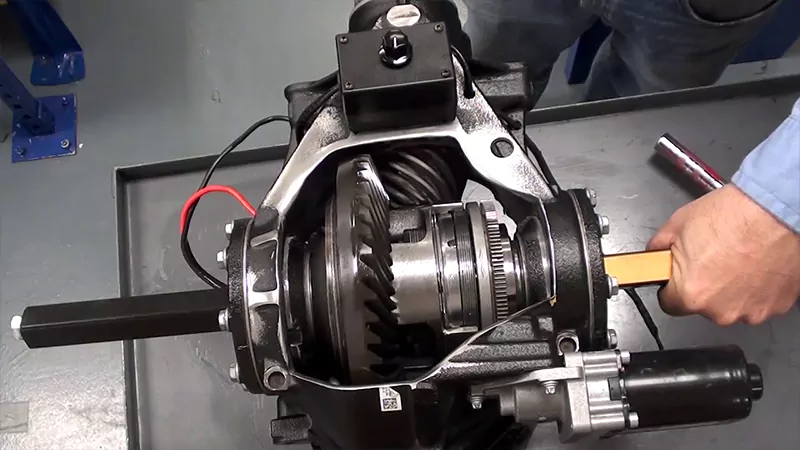A car differential is a mechanical device that allows a vehicle’s wheels to rotate at different speeds while maintaining control and traction. It is an essential component of the drivetrain, especially in vehicles with rear-wheel or all-wheel drive.
The differential is located between the drive wheels and receives power from the transmission via the driveshaft. Inside the differential housing are several key components that work together to transfer power from the driveshaft to the wheels. These components include the crown wheel and pinion gears, differential case, spider gears, and bearings.
Components of a Differential

Crown Wheel and Pinion Gears
These are the primary gears that transfer power from the driveshaft to the differential. The pinion gear is connected to the driveshaft and meshes with the crown wheel, which is attached to the differential case. When the driveshaft rotates, it turns the pinion gear, which in turn rotates the crown wheel and the differential case.
Differential Case
The differential case houses the spider gears and is connected to the crown wheel. As the crown wheel rotates, it causes the differential case to rotate as well, transferring power to the spider gears.
Spider Gears
The spider gears are small gears located inside the differential case. They are connected to the axle shafts and allow the wheels to rotate at different speeds. When the vehicle is moving in a straight line, the spider gears do not rotate, and power is evenly distributed to both wheels. When the vehicle turns, the spider gears rotate to allow the wheels to spin at different speeds.
Bearings
Bearings support the differential case and gears, allowing them to rotate smoothly. They reduce friction and wear, ensuring the differential operates efficiently.
Functionality of the Differential
One of the primary functions of the differential is to allow the wheels to rotate at different speeds, especially when turning corners. When a vehicle turns, the outer wheel travels a greater distance than the inner wheel. Without a differential, this speed difference would cause the wheels to bind and the tires to scrub against the road surface, leading to excessive wear and reduced traction.
The differential also plays a crucial role in determining the final drive ratio of the vehicle. By changing the size of the crown wheel and pinion gears, engineers can adjust the overall gearing of the vehicle to achieve the desired balance of performance and fuel efficiency.
Types of Differentials
There are several types of differentials used in automotive applications, including open differentials, limited-slip differentials (LSDs), and locking differentials. Each type has its advantages and disadvantages, depending on the intended use of the vehicle.
Open Differential
The most common type of differential, which allows the wheels to rotate at different speeds but can struggle with traction when one wheel loses grip.
Limited-Slip Differential (LSD)
Provides better traction by limiting the speed difference between the wheels, ensuring that some torque is always transferred to the wheel with more grip.
Locking Differential
Can lock the wheels together, forcing them to rotate at the same speed. This type is useful in off-road or low-traction conditions.
Maintenance and Care
Proper maintenance of the differential is essential to ensure its longevity and optimal performance. Regular inspections, fluid changes, and adjustments are key to preventing premature wear and ensuring smooth operation. Additionally, driving habits, such as excessive speeding or aggressive cornering, can put extra strain on the differential and should be avoided to prolong its lifespan.
Conclusion
In conclusion, the differential is a critical component of the drivetrain in automotive design. Its ability to distribute power to the wheels while allowing them to rotate at different speeds is essential for smooth and efficient operation. Understanding how the differential works and the different types available can help drivers appreciate its importance and take better care of this vital automotive component. By maintaining and caring for the differential and its components, drivers can ensure a smooth and efficient driving experience for years to come.



